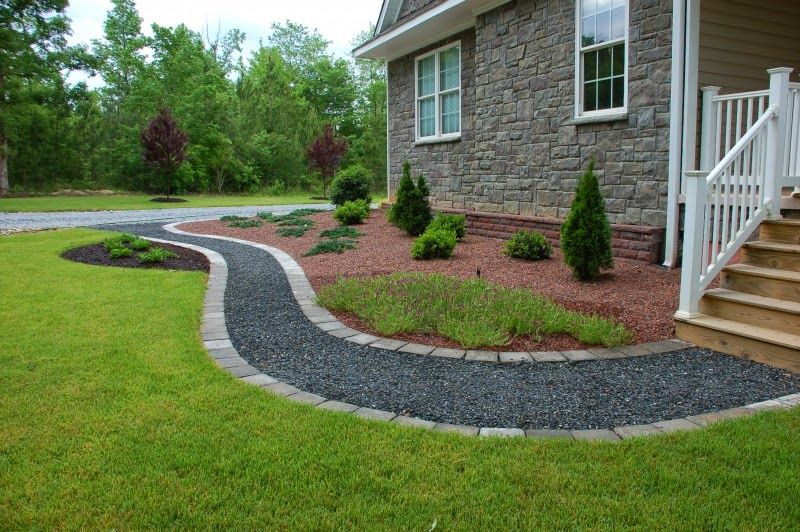
Amelia Davis, founder of Decorants , invites you to explore a world of interior design and home decor. Discover inspiration, tips, and resources to transform your space into a personalized haven of style and comfort.
Table of Contents
Welcome to the world of gravel and walkways! When people think of having an inviting and beautiful outdoors and walkways, there’s plenty of focus laid on slate pathways or brick walkways but one praiseworthy material we often forget about is gravel. There’s nothing more inviting than the sound of gravel crunching beneath your feet as you walk and the rustic feeling and charm that comes along with the gravel. Gravels are highly versatile and durable and are known for their permeability and affordability.
Gravel is nothing but the loose aggregation of rock fragments and forms naturally as a result of sedimentary and erosive geological processes. Gravels are classified into various sizes, forms, textures, and colors and can add a charming touch to your garden and yard. They provide versatile and customized options whether you are planning a traditional or modern look for your place. Don’t believe us? Let’s discover the beauty and functionality of gravel with these types of gravel for walkways and ideas.
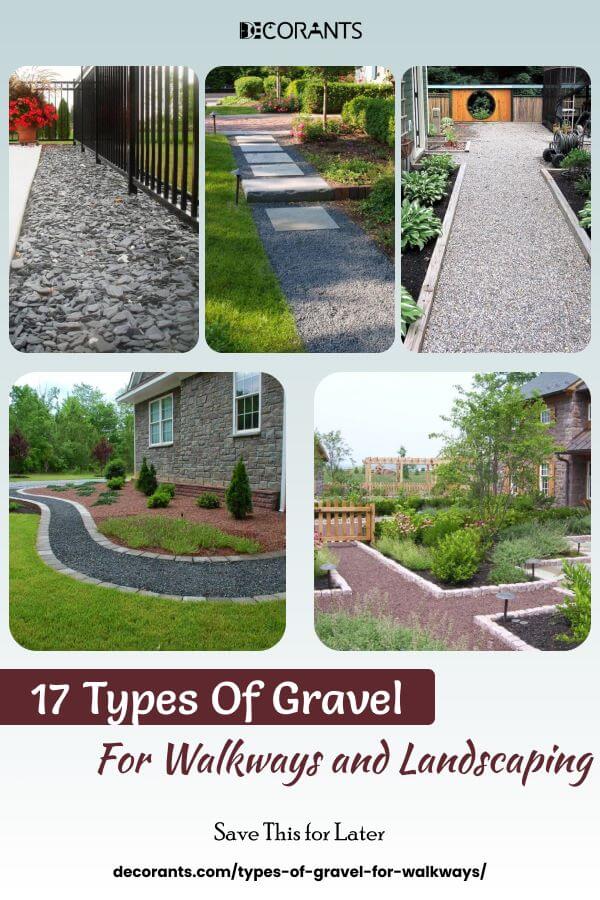
There are various reasons to choose gravel as your landscaping material. Let’s understand what they are and what type of gravel for walkways best suits your garden because It’s not all the same!
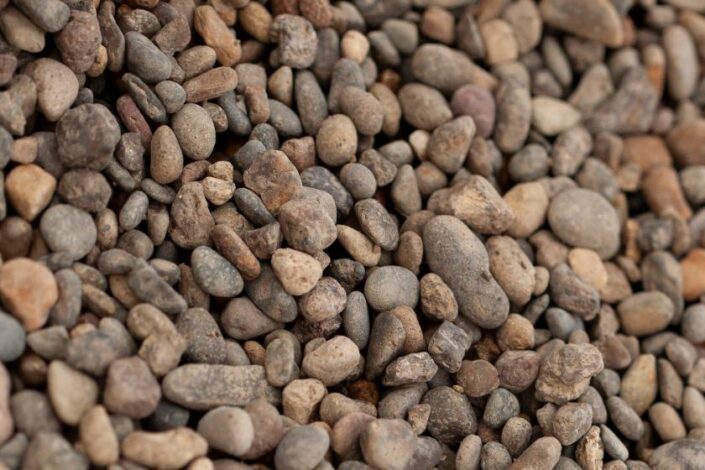
Pea gravels are the popular choice for walkways and entrances and our pea gravel walkway ideas will blow your mind. They are small, rounded stones that are usually about the size of a pea and might be described as 1/4-3/8″ washed or native gravel in more industrial applications. Pea gravels are one of the popular choices as they are smooth and comfortable to walk on and have an attractive array of colors to choose from.
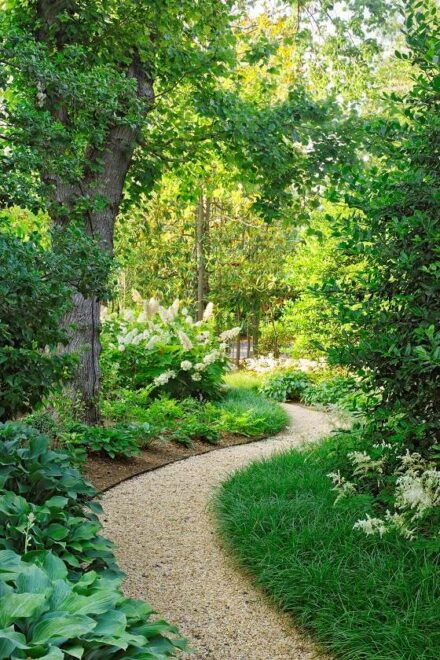
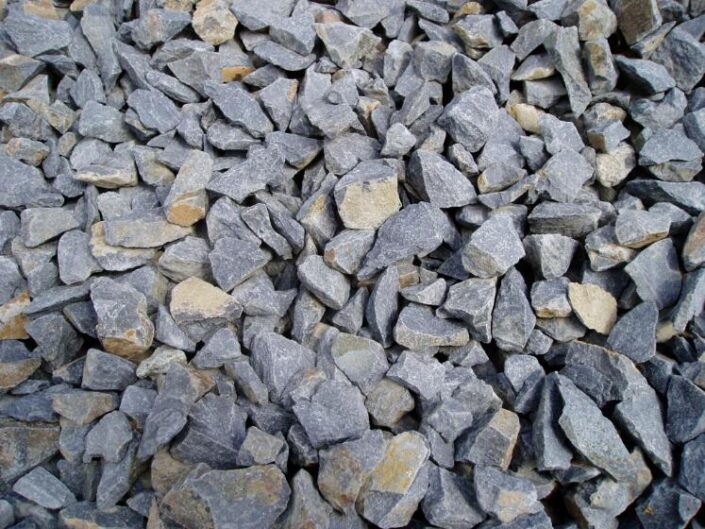
Basalt is a type of extrusive igneous, dark-colored volcanic rock that adds a modern and sleek appearance to walkways. It is durable, provides a unique texture, and gets its dark color from the composition of its minerals. The long-lasting nature of basalt makes it a low-maintenance and a power wash is enough to keep it clean.
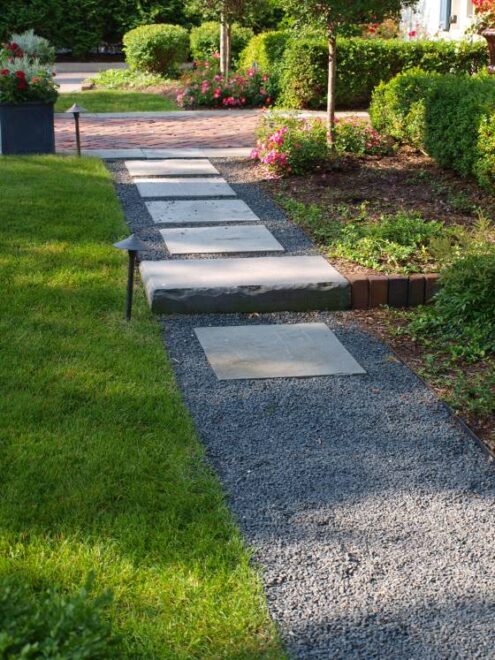
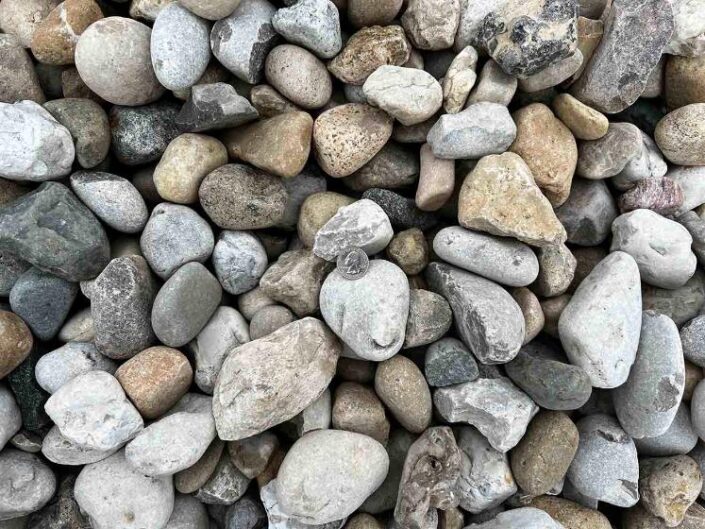
River rock is a natural, smooth, rounded stone that comes in various sizes and colors. River rock creates a visually appealing and natural-looking pathway and the smooth texture makes it a popular choice for walkways and paths. River rock is one of the most promising gravel path ideas also known for its low-maintenance appearance and can provide good drainage.
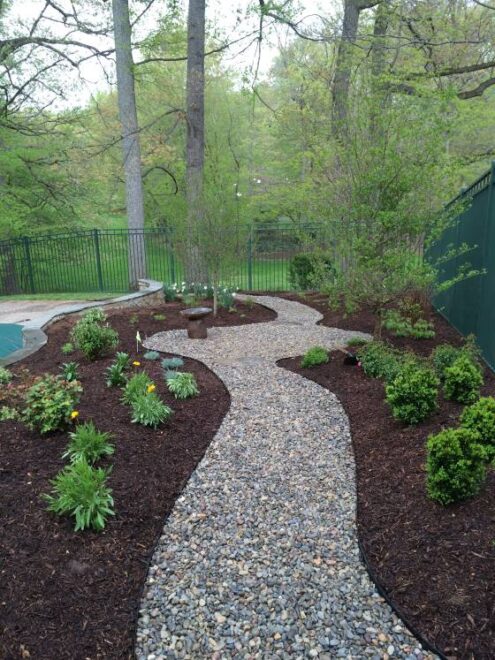
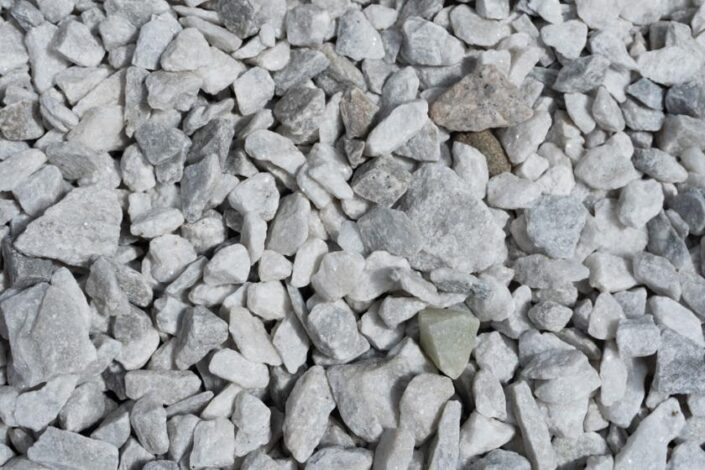
Marble chip gravel is great for classier walking paths and patios. This gravel makes the surface more reflective helping brighten the Back and Frontyard. This gravel pathway reflects light so much that it can be too much for plants and affect their chemical levels. Marble chips add salts and chemicals to your garden to reach roots, slowing growth as plants essentially starve, or cause root rot. Marble chip gravel is ideal for walkway from driveway to front door because of its upscaled look.
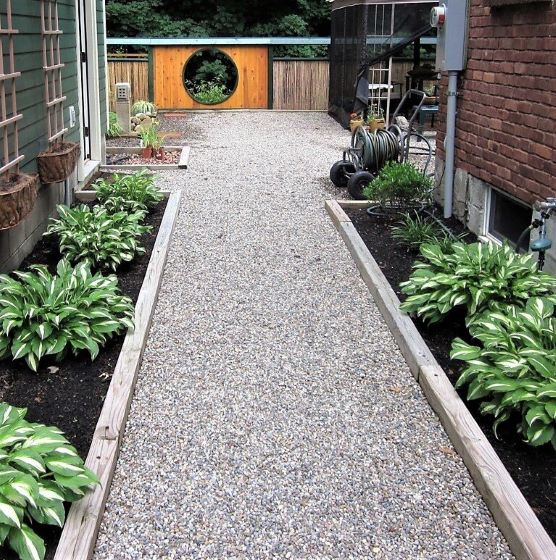
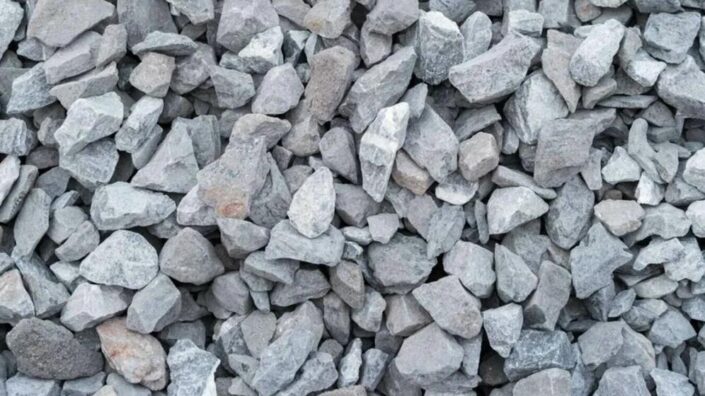
Crushed stone comes in a variety of sizes and is made from different types of rock. It provides a stable and durable surface, and the varying sizes allow for a more textured appearance. It provides a stable base and is available in a range of colors and sizes making it a popular option. It’s also a more affordable option than some other types of gravel for walkways.
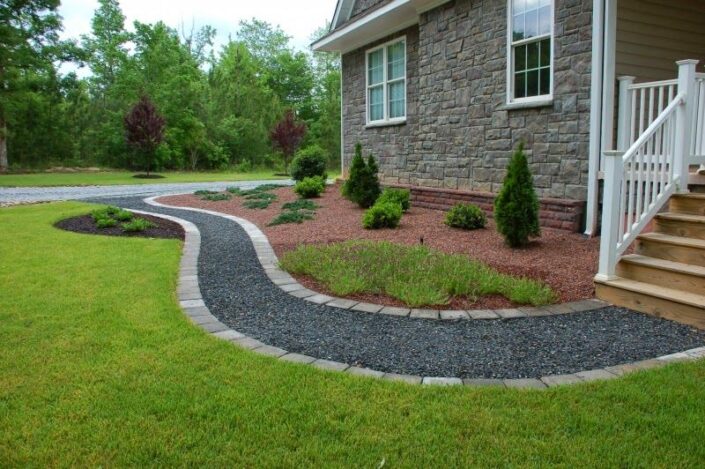
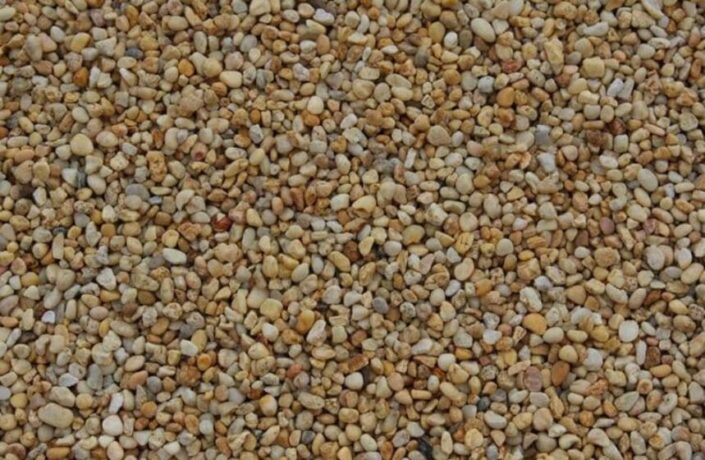
Jersey Shore gravel is characterized by its distinct yellow color. These yellow Jersey shore gravel can provide a unique and stunning perspective to your landscape. These are rounded in shape and available in earthy colors. The Jersey Shore gravel is similar to the pea gravel but the stones are more irregular in shape. Remember to add edging gravel path, as it won’t compact as well as other more jagged types of gravel.
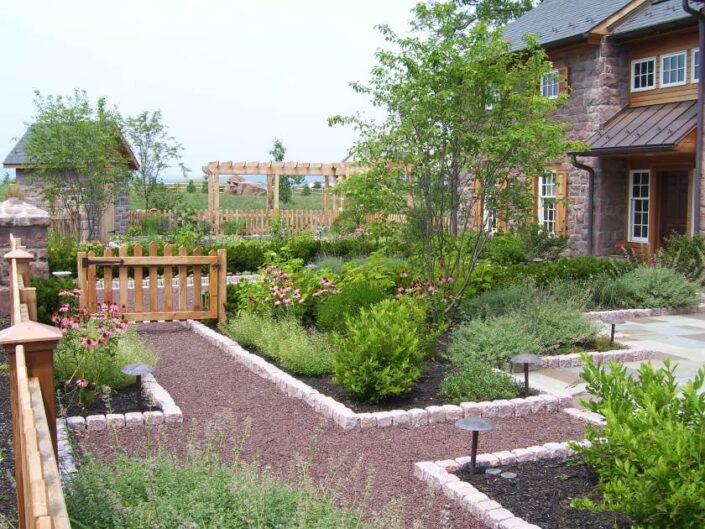
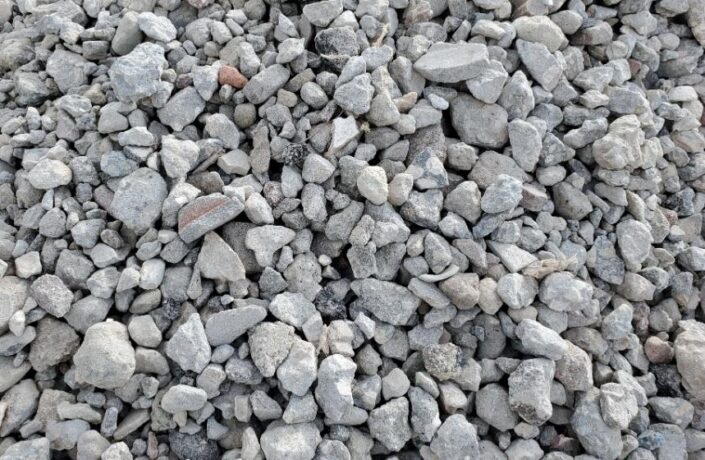
Bank run is primarily available in brown and gray colors and is made from riverbanks. Bank-run gravel meets the construction needs of many projects because of its easy availability. A bank run is made up of dirt, rocks, silt, sand, and many other ingredients and works like a wonder as a private driveway or backyard pathway.
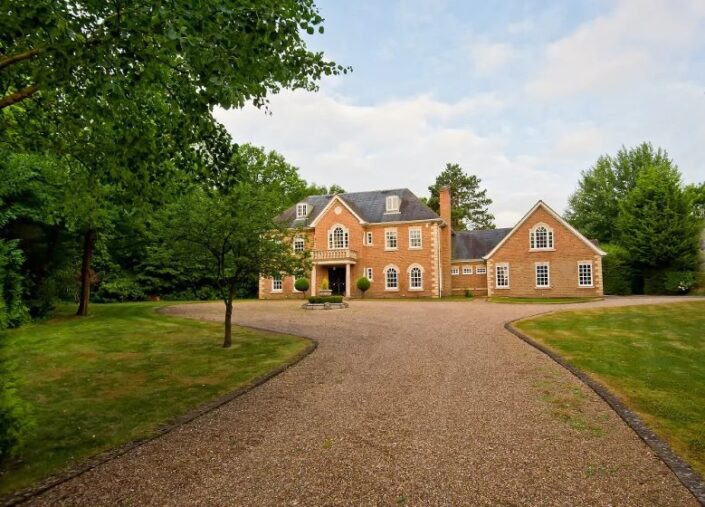
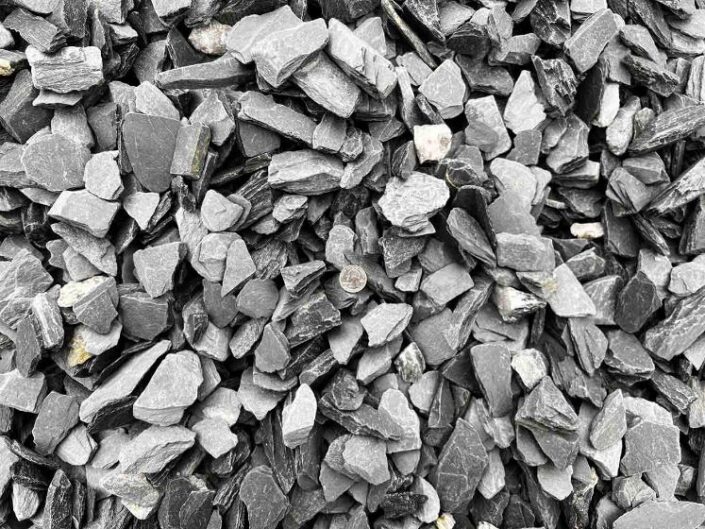
Slate gravel is very resistant to weather conditions such as frost and freezing, Slate gravel & chips typically refers to crushed pieces of slate stone used for landscaping purposes. The gravel and chips come in various sizes and colors, ranging from shades of gray to blue, green, and even purple. They’re often used to add texture, color, and a natural look to outdoor spaces.
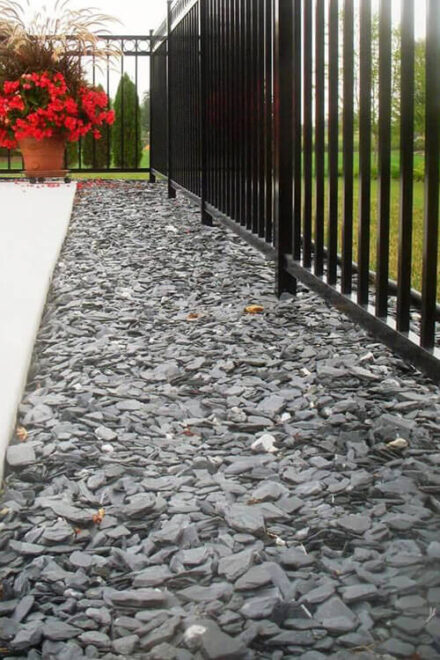
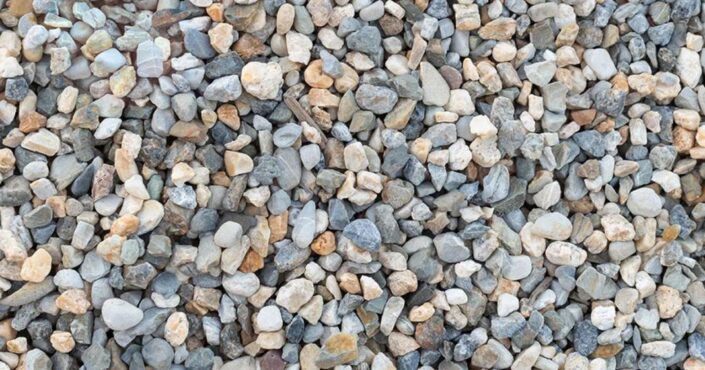
Mulch gravel refers to a type of gravel that is used as a mulching material in landscaping and gardening. Unlike traditional organic mulches such as wood chips or shredded bark, mulch gravel is made of small stones or pebbles. Mulch gravel is often preferred in arid climates or areas prone to erosion, as it doesn’t decompose like organic mulches and can provide long-lasting benefits with minimal maintenance.
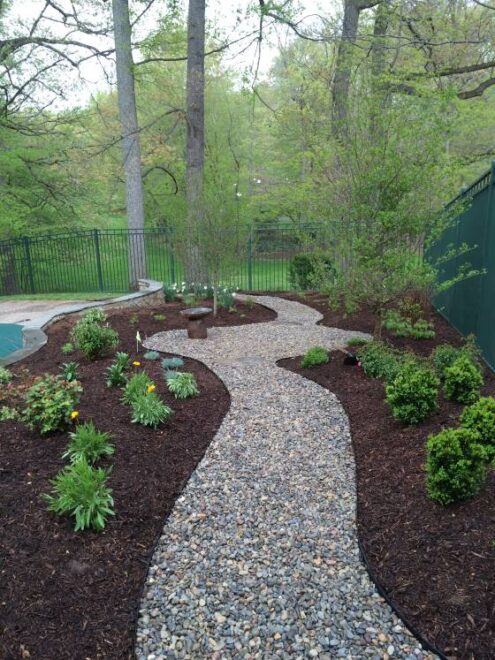
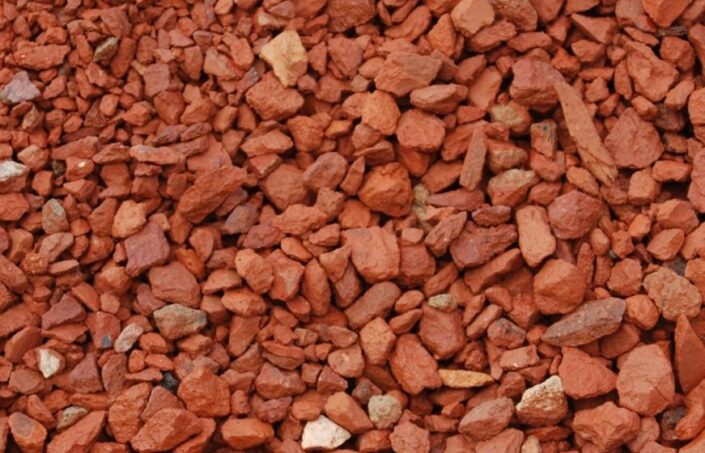
Brick gravel stepping stones are a creative landscaping feature that combines the durability of bricks with the versatility of gravel pathways. These stepping stones in gravel typically consist of bricks arranged in a pattern or design with gravel filling the gaps between them. They provide a sturdy surface for walking while allowing water to drain through, which can help prevent erosion and puddling.
RELATED: Beautiful Brick Patterns for Curved Walkways
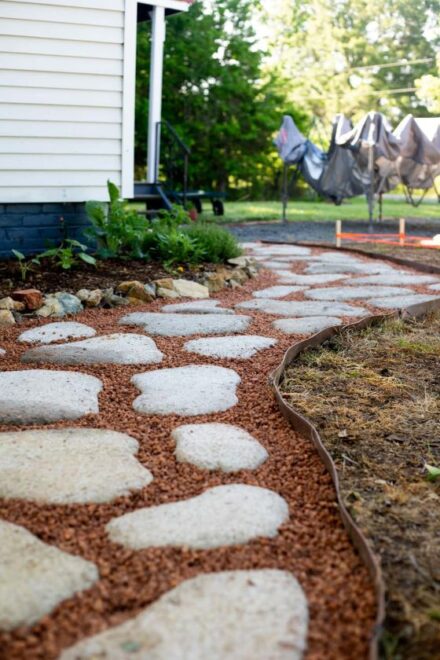
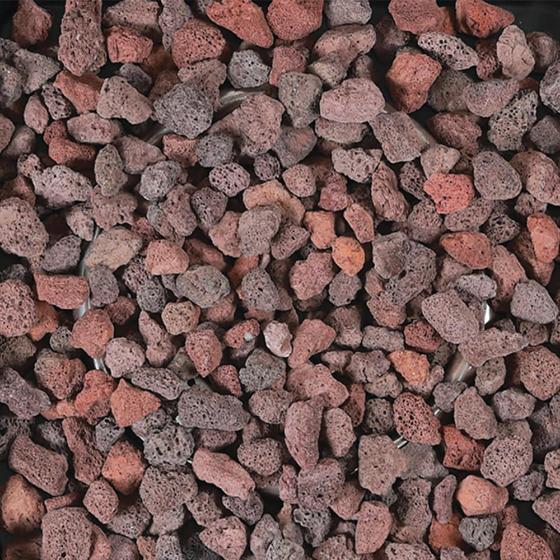
Lava rock gravel, also known as volcanic rock gravel, is a type of landscaping material made from crushed volcanic rock. It is formed when molten lava from volcanic eruptions cools and solidifies into porous rock. Lava rock gravel is lightweight, durable, and has a unique texture and appearance that can enhance the aesthetic appeal of outdoor spaces.
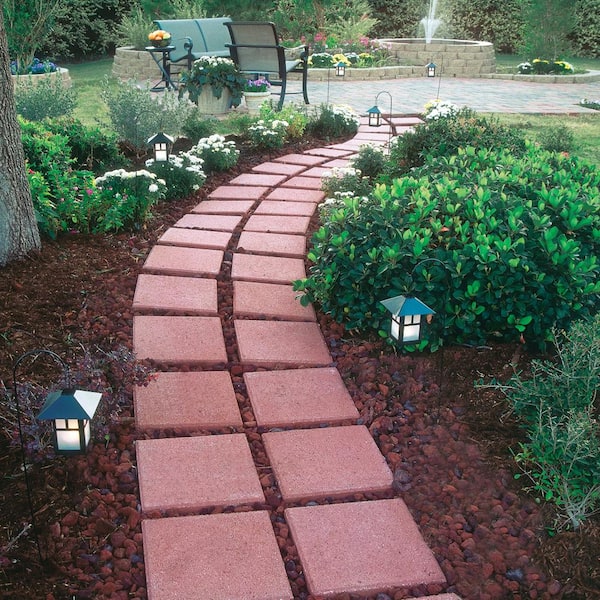
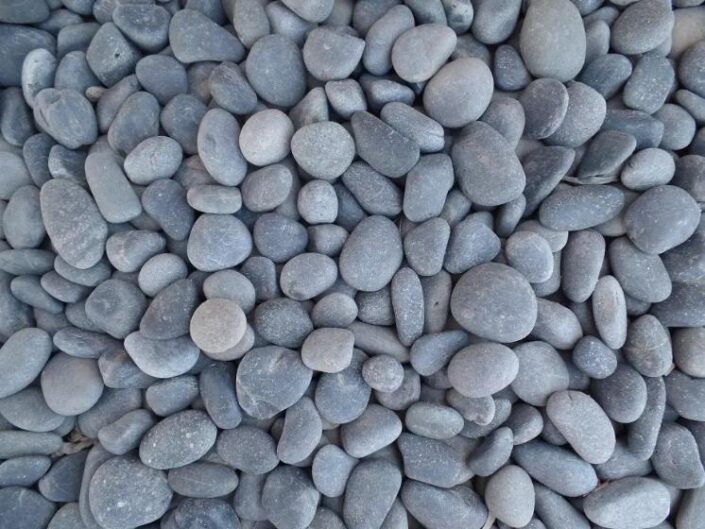
Mexican beach pebbles are smooth, rounded stones that are naturally tumbled by ocean waves along the beaches of Mexico. These pebbles are typically made of basalt, a volcanic rock, and come in a variety of sizes and colors, ranging from shades of gray and black to tan, brown, and even red. This is one of the best pebble pathway ideas you can go for.
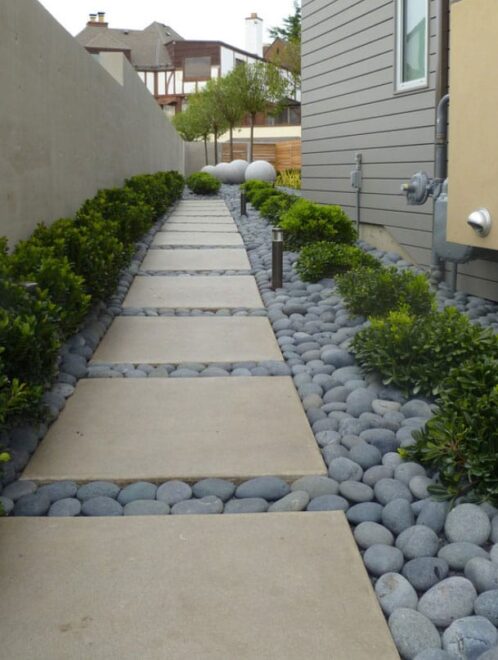
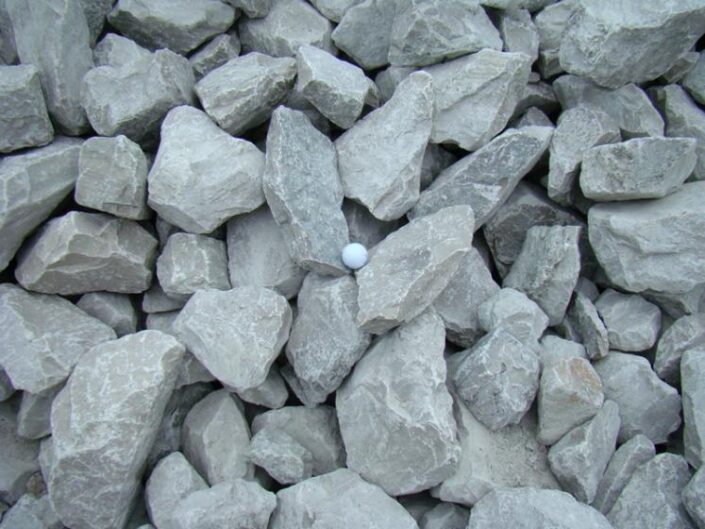
Rip rap gravel, also known simply as rip rap, is a type of large, irregularly shaped stone commonly used to protect shorelines, embankments, and slopes from erosion caused by water currents. It’s typically made from durable materials such as granite, limestone, or basalt.
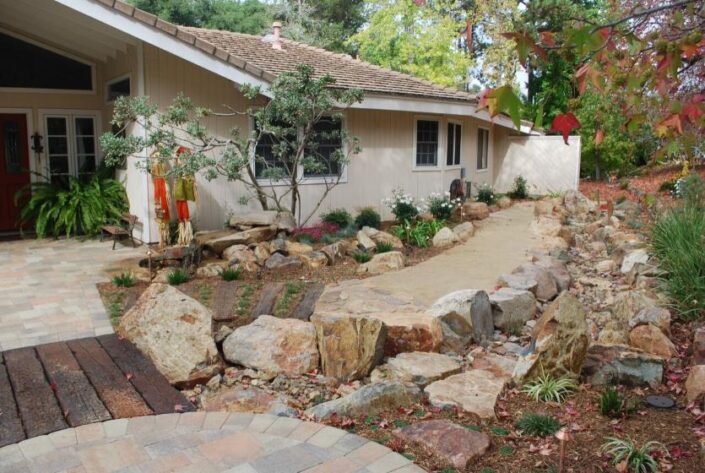
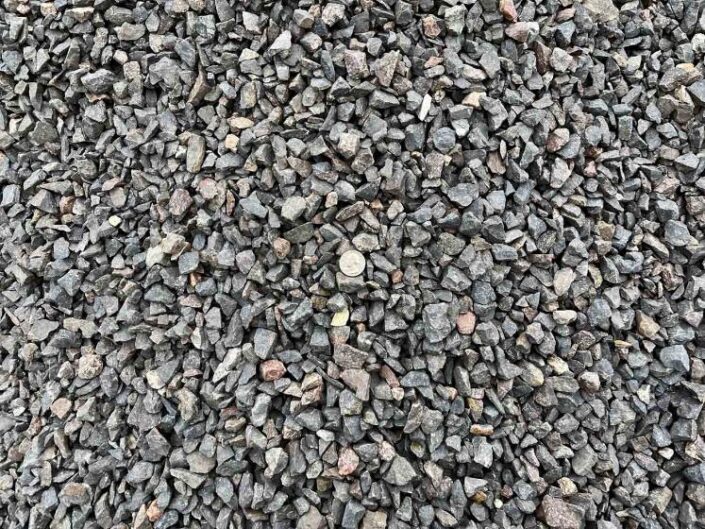
Traprock gravel, also known as trap rock gravel, is a type of crushed stone derived from igneous rocks, typically basalt or diabase. It gets its name from the Swedish word “trappa,” meaning “stairs,” as it was historically used in Scandinavia for paving and construction of steps.
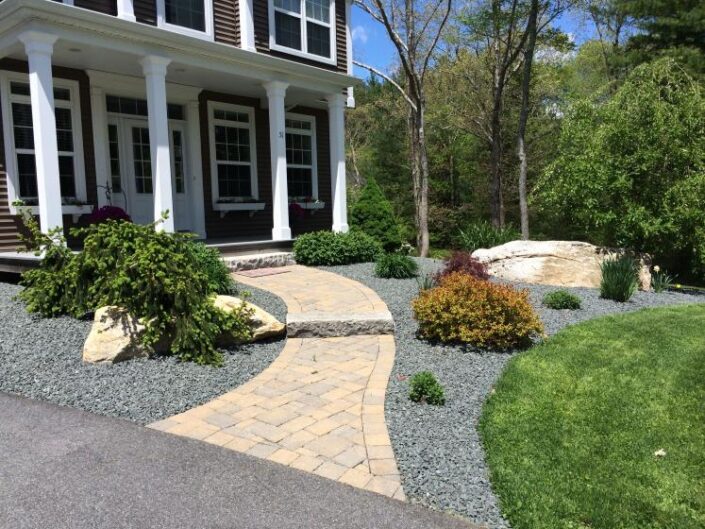
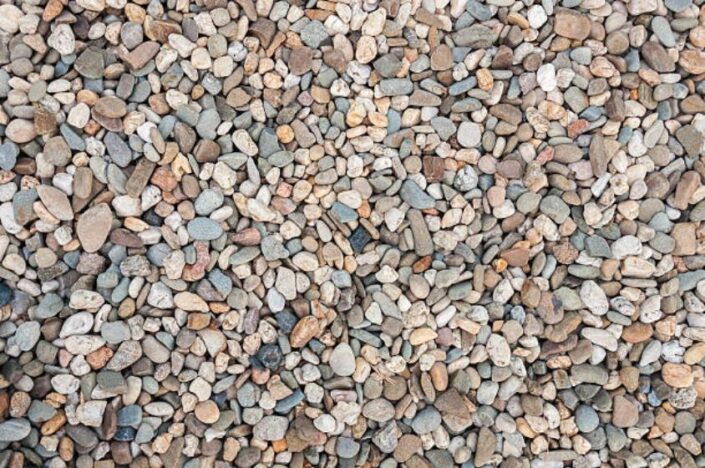
Flagstone is flat and smooth and is a kind of natural stone making it an ideal choice for walkways and paths. It’s available in a range of colors and sizes and can provide a more formal and elegant look to your landscape. Flagstone is also durable and can withstand heavy foot traffic.
RELATED: Inspiring Pictures of Paver Walkways Ideas For Your Yard
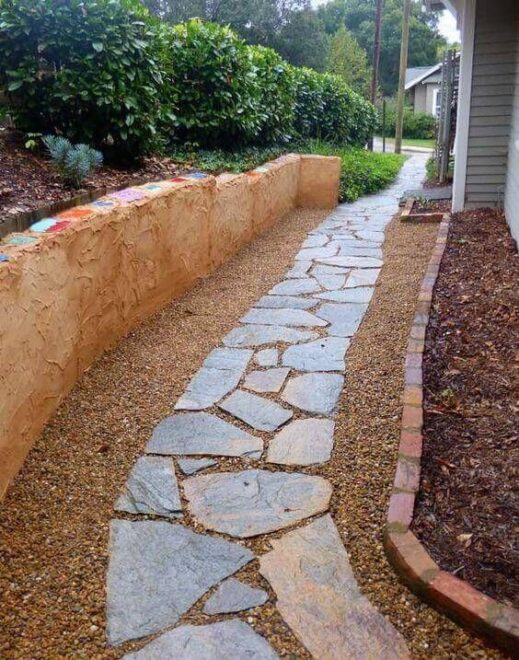
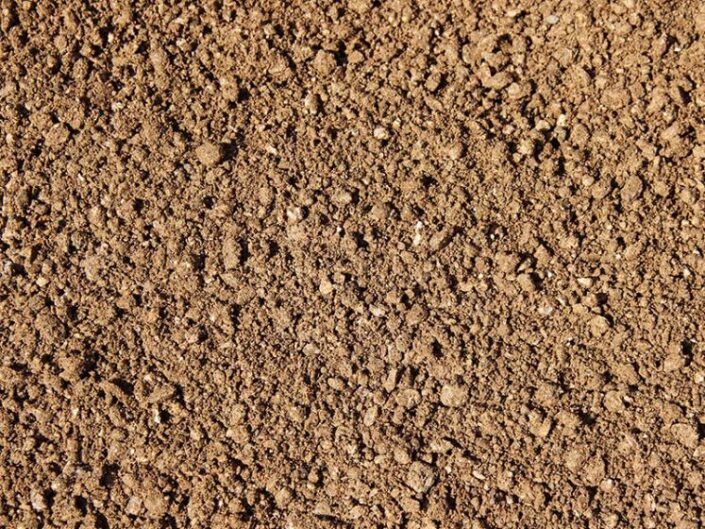
Decomposed granite is a type of gravel that is made up of small, weathered pieces of granite. It has a sandy texture and is available in a range of earthy colors. Decomposed granite is a popular choice for walkways and paths due to its durability and ability to provide good traction. It’s also low-maintenance and weed-resistant.
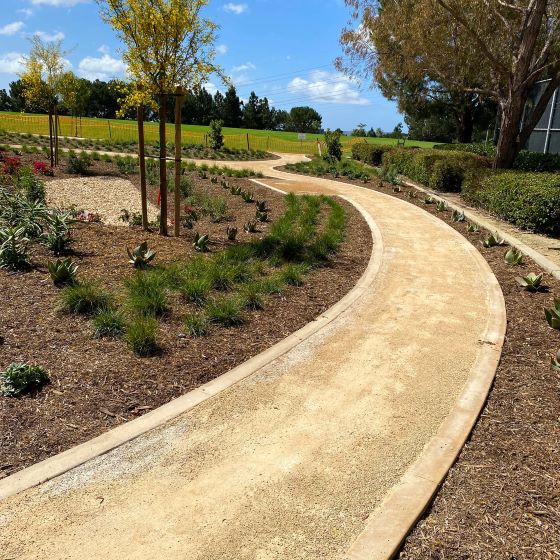
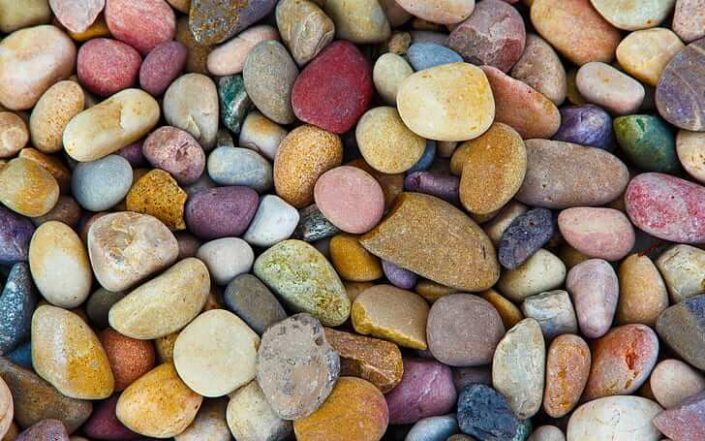
Lastly, whichever type of gravel you choose for your walkway, don’t forget to make your garden look attractive and inviting by giving it a colorful twist. Go for a theme of your choice, color your gravels and organize them to create that symmetrical and effective look.
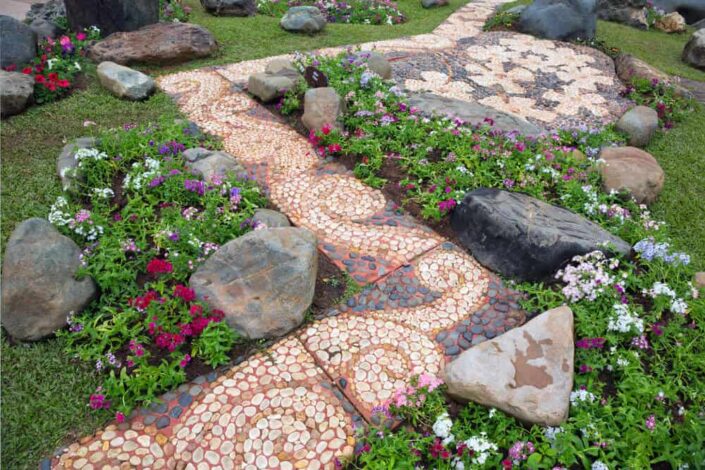
The type of gravel you install totally depends on your choice and preferences. Crushed gravel is suitable for parking areas, driveways and walkways as the round material used in these applications would be similar to trying to walk or drive through marbles. Try pea gravel, marble chips, and gravel ones to get that modern and sophisticated look.
Installing gravel walkways can be a tricky business. One can seek professional help for that perfect landscape or can go for a DIY project to create a durable and attractive gravel walkway to enhance your outdoor space.
Stepping stones are a great addition to make your landscape look aesthetically pleasing. Follow some simple steps.
Do this and your picture-perfect landscape is ready.
Factors such as climate, foot traffic, and the quality of the base materials can affect longevity. Periodic replenishment of gravel and addressing any drainage issues can help extend the walkway’s lifespan.
When selecting the type of gravel for walkway, consider factors like the climate, maintenance requirements, and the overall aesthetic you want to achieve. Additionally, proper installation, including the use of landscape fabric and a suitable base, can enhance the longevity and stability of the gravel pathway.
0 comments